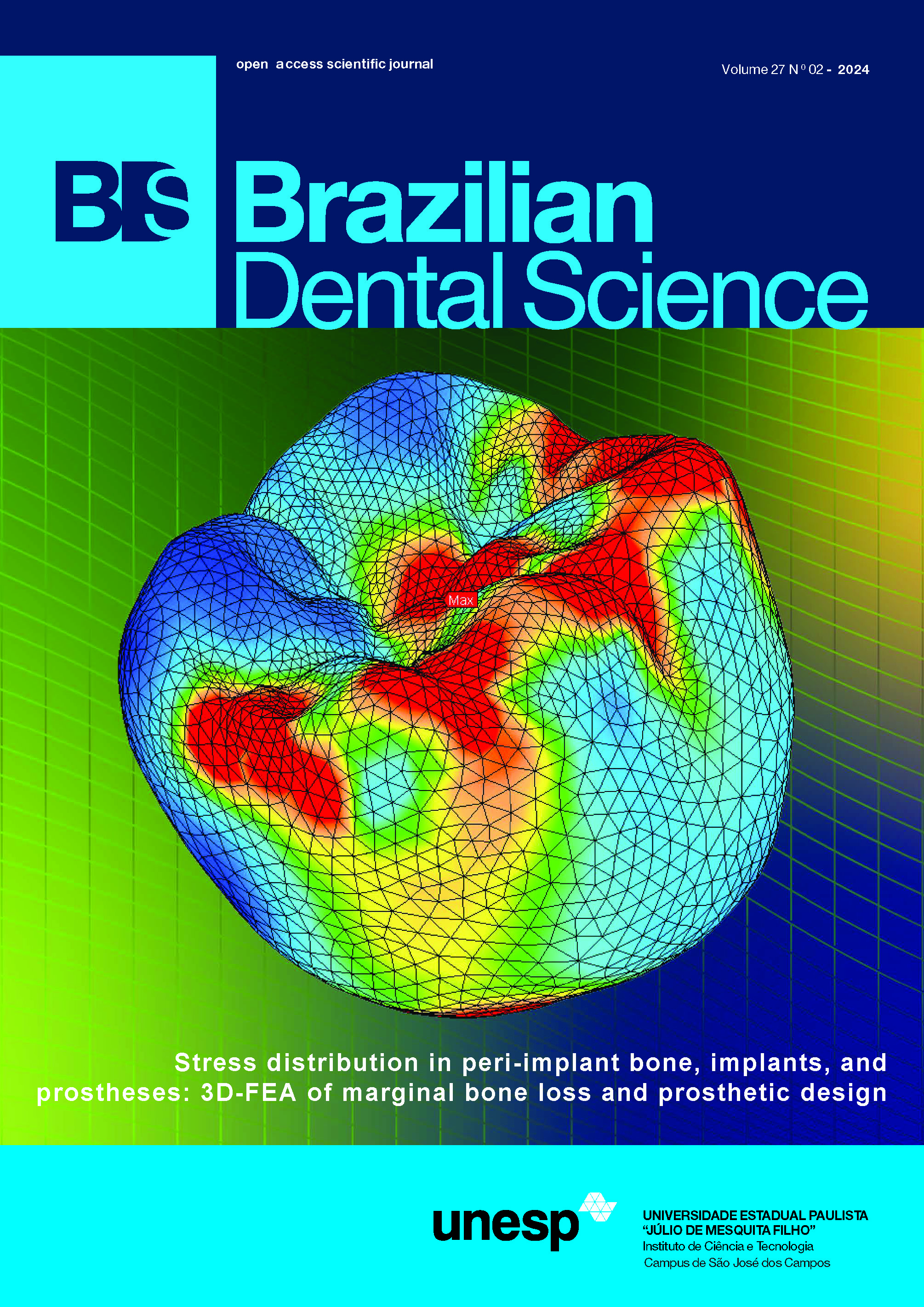Knowledge level of children with Down Syndrome’s parents before and after reading electronic book “Tooth Injuries in Children with Down Syndrome”
DOI:
https://doi.org/10.4322/bds.2024.e4040Abstract
Objective: To analyse the knowledge level before and after reading electronic book “Tooth Injuries in Children with Down Syndrome” through children with Down syndrome’s Parents. Material and Methods: This study was conducted at three special need school type C (designed to the mentally disabled children) in Jakarta and POTADS Foundation, with 37 eligible parents. Book and questionnaire used were developed and modified from the guidelines of tooth injuries on typical children, with special consideration of children with Down syndrome. Validity and reliability were tested through discussion with experts, dentists, and children with Down syndrome’s parents. Knowledge was measured twice, before and after reading electronic book for 10 minutes each step using same questionnaire. The total scores were categorized as follows: good (12-15), fair (9-11), and poor (0-8). Difference knowledge scores were statistically tested. Results: Mean of total score before and after reading were 6.62 (poor); 10.51 (fair), respectively. Difference score was statistically significant (p=0,001) using paired T-test. Conclusion: The electronic book “Tooth Injuries in Children with Down Syndrome” was developed and modified by authors and needs to be evaluated by measuring the knowledge level of parents of children with Down syndrome. The measurement conducted showed that there is a difference in the level of knowledge of parents before and after reading the electronic book “Tooth Injuries in Children with Down Syndrome.”
KEYWORDS
Books; Down Syndrome; Parents; Tooth Injuries.
Downloads
Published
How to Cite
Issue
Section
License
Brazilian Dental Science uses the Creative Commons (CC-BY 4.0) license, thus preserving the integrity of articles in an open access environment. The journal allows the author to retain publishing rights without restrictions.
=================




























